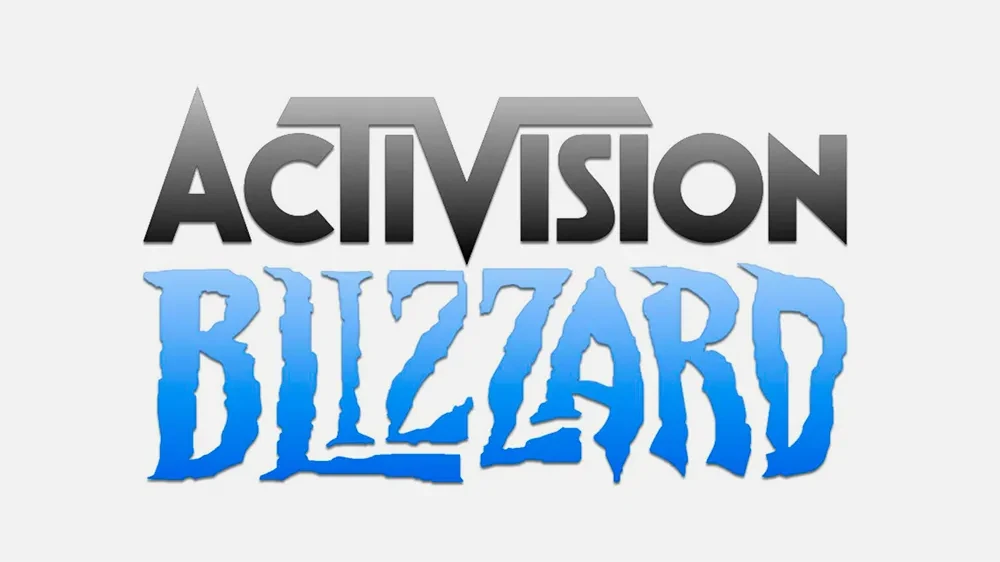The topic of Activision Blizzard layoffs has become increasingly prominent in recent years, highlighting a trend of significant job cuts within the gaming industry.
From 2019 through early 2025, Activision Blizzard—one of the biggest gaming companies behind blockbuster franchises like Call of Duty and Overwatch—underwent several waves of layoffs affecting thousands of employees.
Each round had its unique reasons, from corporate restructuring and shifting market dynamics to high-profile mergers and acquisitions.
In this article, we’ll break down and analyze each major layoff, examining their context, impact, and the broader implications for employees and the gaming industry at large.
Total Activision Blizzard Layoffs (2019–2025)
From February 2019 through January 2025, Activision Blizzard underwent several major workforce reductions.
Here’s a quick breakdown:
- February 2019: 800 employees
- March 2021: 190 employees
- December 2021: approximately 12 employees (QA testers at Raven Software)
- January 2024: 1,900 employees
- September 2024: 650 employees
- January 2025: undisclosed, described as small in size
Estimated Total Layoffs (2019–2025)
Counting only confirmed numbers, Activision Blizzard and Microsoft’s gaming divisions laid off approximately 3,552 employees from 2019 to January 2025.
When including the unspecified smaller layoffs in January 2025, the total estimate remains around 3,600 employees.
Here’s a breakdown of all major Activision Blizzard layoffs:
February 2019 Blizzard Layoffs – Significant Restructuring
In February 2019, Activision Blizzard announced a significant restructuring, resulting in the layoff of approximately 800 employees, which constituted about 8% of its workforce.
This decision came despite the company reporting record revenues of $7.26 billion for 2018, surpassing the $7.16 billion earned in 2017.
Approximately 209 Blizzard Entertainment employees were laid off across various U.S. locations, including Irvine, Santa Monica, Burbank (California), New York City, Austin (Texas), and Bloomington (Minnesota).
The departments most affected were:
- IT Department: 41 employees
- Marketing and Live Experiences: 29 employees each
- Other impacted areas included Global Insights, Publishing, Quality Assurance, Mobile, Customer Service, Finance, and Battle.net.
Among the affected were also:
- King-Owned Z2Live Studio: The Seattle-based mobile game studio was shut down, leading to 78 employees losing their jobs.
- Vicarious Visions: Reportedly laid off around a dozen people.
- Activision’s Mexico City Office: Approximately 15 employees were affected.
- Blizzard’s Versailles Office (France): Lost 134 employees.

Reasons Behind the Layoffs
Despite achieving record revenues, Activision Blizzard cited the need to restructure and focus on core franchises such as Call of Duty, Candy Crush, Overwatch, Warcraft, Hearthstone, and Diablo.
The company aimed to increase development resources for these key areas by approximately 20% over the course of 2019. This shift led to the de-prioritization of initiatives that were not meeting expectations and the reduction of non-development and administrative-related costs.
The layoffs highlighted the challenges faced by large gaming companies in balancing financial performance with operational efficiency.
While the company experienced significant revenue, it also recognized the need to adapt to changing market dynamics by reallocating resources to high-performing franchises.
This move, however, raised concerns about job security and the impact on employee morale, especially given the contrast between the company’s financial success and the substantial workforce reduction.
Moreover, the layoffs emphasized the importance of strategic planning and the potential consequences of rapid expansion without sustainable growth, prompting discussions within the industry about labor practices and the necessity for more stable employment structures.
March 2021 Blizzard Layoffs: A Controversial Move Amid Executive Payouts
In March 2021, Activision Blizzard underwent another round of significant layoffs, affecting approximately 190 employees, including about 50 staff members from its esports division.
This came as part of the company’s efforts to adapt to a changing market, particularly influenced by the lasting effects of the COVID-19 pandemic. With live events canceled or moved online, the esports and live events teams saw substantial cuts.
Details of the Layoffs
The layoffs primarily hit the esports sector, including employees connected to prominent franchises such as Call of Duty League and Overwatch League.
Due to the pandemic, these divisions faced significant disruptions to their typical in-person events and live broadcasts, prompting Activision Blizzard to scale back operations in this area.
Affected employees reportedly received severance packages that included 90 days of severance pay, a year of health benefits, and a $200 gift card for Battle.net, the company’s digital gaming storefront.
The Controversy: CEO Compensation Amid Layoffs
What intensified reactions around these layoffs was the simultaneous news surrounding Activision Blizzard CEO Bobby Kotick.
At the same time as these layoffs were taking place, reports emerged that Kotick could receive an incentive payout of up to $200 million due to a clause in his employment contract, set years earlier in 2016.
This compensation was part of a “Shareholder Value Creation Incentive”, triggered when the company’s stock price stayed above a certain threshold for 90 consecutive days. CtW Investment Group, a union-backed organization advocating for responsible corporate governance, raised alarms over this bonus, highlighting its stark contrast to employee layoffs.
Specifically, CtW Investment Group argued that Activision Blizzard’s soaring stock price, boosted significantly by increased gaming activity during the pandemic, was unjustly enriching executives while the company simultaneously cut its workforce.
Industry Reactions and Broader Implications
This situation sparked significant backlash across the gaming community and beyond.
The optics of awarding a multimillion-dollar bonus to a CEO during layoffs raised critical questions about corporate ethics, fairness, and responsibility toward employees.
Activision Blizzard defended the layoffs as necessary business adjustments due to the shifting nature of events and esports. However, employee advocates and critics argued these cuts represented deeper structural issues related to corporate priorities and equity in compensation.
Ultimately, this event highlighted a broader tension within the gaming industry: the gap between executive compensation and employee welfare.
It prompted industry-wide conversations about the ethics of layoffs, the fairness of bonus structures, and the need for better protection and representation for workers in gaming.
The March 2021 layoffs at Activision Blizzard remain a notable example of how complex corporate decisions can have lasting impacts, both operationally and reputationally, particularly when set against stark contrasts in executive and employee experiences.

December 2021: Layoffs at Raven Software Spark Outrage and Unionization Efforts
In December 2021, Activision Blizzard faced significant backlash following the unexpected layoffs of quality assurance (QA) testers at Raven Software.
This event marked a critical turning point, not only because of the layoffs themselves but due to the broader implications for labor relations in the gaming industry.
What Happened at Raven Software?
Raven Software, best known for its contributions to the Call of Duty franchise, laid off around a dozen QA testers who had been initially promised full-time employment.
The layoffs came after several months of intense work on the massively popular Call of Duty: Warzone. The affected employees were informed abruptly, sparking immediate outrage within Raven Software and across the gaming industry.
The situation worsened when reports surfaced that many of these QA testers had relocated specifically for their positions or had recently been assured greater job security.
As part of this decision, Raven Software justified the layoffs by citing the need for restructuring and optimization.
Immediate Employee Reactions and Strike
The layoffs quickly led to internal turmoil at Raven Software, resulting in an employee-led walkout. QA testers and other Raven employees publicly protested the decision, highlighting broader issues around transparency, fair treatment, and job security.
Workers criticized Activision Blizzard’s decision-making process, calling attention to what they viewed as unfair labor practices.
The uproar gained considerable public and media attention, putting Activision Blizzard’s management under further scrutiny, particularly as this event occurred amidst ongoing controversies surrounding workplace culture within the company.
Broader Impact: Rise of Unionization Efforts
One significant outcome of the December 2021 layoffs was the intensified push toward unionization. The Raven Software incident galvanized support for better labor protections and led directly to organized unionization efforts.
By January 2022, Raven Software’s QA team officially formed the Game Workers Alliance, marking a historic milestone as one of the first recognized unions within a major U.S. gaming company. This movement reshaped labor conversations industry-wide, drawing attention to issues of fair compensation, worker rights, job security, and transparent management practices.
Activision Blizzard’s Response and Industry-Wide Implications
Activision Blizzard defended the layoffs as necessary business restructuring decisions.
However, the timing and manner of the layoffs sparked backlash from both industry peers and media outlets.
Critics argued that these cuts were emblematic of broader issues within the gaming sector, particularly around the treatment of QA teams, who often face precarious employment conditions despite playing a critical role in game development.
The controversy served as a significant wake-up call, prompting other studios to reconsider labor policies and increasing scrutiny of employment practices throughout the industry.
It became clear that developers, testers, and support staff were increasingly unwilling to accept employment instability as the norm.
January 2024 Blizzard Layoffs: Post-Acquisition
In January 2024, shortly after Microsoft finalized its massive $68.7 billion acquisition of Activision Blizzard, significant layoffs shook the gaming industry again. Microsoft announced it was cutting 1,900 jobs across its gaming divisions—approximately 8.6% of Microsoft’s total 22,000 gaming employees.
This round of layoffs marked a critical moment in the gaming world, highlighting how even substantial mergers and acquisitions, initially seen as opportunities, can rapidly become challenging situations for employees.

What Exactly Happened?
The layoffs impacted various roles across Microsoft’s new gaming conglomerate, including significant numbers from Activision Blizzard.
The restructuring was part of a carefully planned effort, described by Microsoft Gaming CEO Phil Spencer as necessary to achieve a “sustainable cost structure.”
Spencer’s internal memo specifically mentioned that Microsoft had identified “areas of overlap” following the Activision Blizzard acquisition. This meant roles that were duplicated between the previously separate organizations became redundant, prompting the cuts.
Additionally, this restructuring came with the notable departure of Mike Ybarra, Blizzard’s president, who stepped down shortly after the deal’s completion. In a public statement, Ybarra acknowledged the impact of the layoffs, emphasizing that the job cuts were not a reflection of the affected individuals’ performance or contribution.
Employee Support and Union Protections
Microsoft stated that all affected employees would receive severance packages complying with local employment laws. The company also urged remaining employees to treat departing colleagues with “respect and compassion.” Despite these reassurances, the layoffs significantly disrupted thousands of lives, prompting widespread concern and criticism.
Notably, several gaming studios under Microsoft and Activision Blizzard had unionized by this point, including teams at Zenimax, Raven Software, and Blizzard Albany. The Communications Workers of America (CWA), representing these unions, emphasized that unionized members were protected from these specific layoffs, highlighting a significant benefit of organized labor within the industry.
Broader Industry Context: A Difficult Year for Gaming
January 2024 was especially harsh for the gaming industry, with layoffs widespread across major companies:
- Riot Games eliminated 530 jobs.
- Unity cut 1,800 positions, representing 25% of its workforce.
- Discord laid off 170 employees (17% of the company).
- Amazon’s Twitch reduced its workforce by 500 employees, approximately 35% of the company.
According to industry expert Rami Ismail, approximately 5,600 gaming professionals had already lost their jobs by early 2024—more than half the total layoffs from the entire previous year.
This wave of layoffs underscored a challenging period, not just for Activision Blizzard but the entire tech and gaming sectors. Analysts attributed these cuts to companies adjusting after years of aggressive hiring during the pandemic, coupled with broader economic pressures.
Industry Implications and Future Outlook
The layoffs in January 2024, particularly following such a high-profile merger, highlighted the vulnerability of workers amid corporate restructuring and consolidation. They also sparked further conversations about job stability, the benefits of unionization, and how mergers affect the broader workforce.
While unionized teams like Raven and Zenimax enjoyed more robust protections, the widespread cuts demonstrated that even giants like Microsoft must adjust operations following large acquisitions, often at the cost of jobs.
This raised ongoing debates about employee rights, industry ethics, and the responsibilities major companies bear toward their workforce.
September 2024: Further Layoffs in Microsoft’s Gaming Division Post-Acquisition
In September 2024, Microsoft announced the layoff of approximately 650 employees from its gaming division, which includes Activision Blizzard and Xbox teams.
This move followed an earlier reduction of 1,900 positions in January 2024, bringing the total number of layoffs to around 2,550 since Microsoft’s acquisition of Activision Blizzard.
Details of the Layoffs
The 650 layoffs primarily affected employees in corporate and support roles. I
n an internal memo, Phil Spencer, CEO of Microsoft Gaming, emphasized that no game studios would be closed, and no projects or devices would be canceled as a result of these cuts. He stated that the decision aimed to “organize our business for long-term success” and better align the company’s structure following the acquisition.
Context and Reasons Behind the Layoffs
These layoffs were part of Microsoft’s ongoing efforts to integrate Activision Blizzard into its broader gaming portfolio.
The acquisition, valued at $68.7 billion, was finalized in October 2023. Post-acquisition, Microsoft sought to identify and eliminate areas of overlap to streamline operations and reduce redundancies.
The gaming industry, which experienced a surge during the pandemic, faced a slowdown in consumer spending starting in 2022, leading many companies to reevaluate and adjust their workforce sizes.
Microsoft’s layoffs were reflective of broader industry trends aimed at maintaining financial stability amid changing market dynamics.
January 2025 – New Round of Blizzard Layoffs
In January, Microsoft implemented another round of layoffs affecting multiple divisions, including its gaming sector.
While the company did not disclose the exact number of employees impacted, reports indicated that these cuts were part of broader organizational and workforce adjustments.
Scope of the Layoffs
- Divisions Affected: The layoffs spanned several departments, notably security, sales, experiences and devices, and gaming.
- Performance-Based Cuts: In addition to these layoffs, Microsoft reportedly terminated certain employees based on performance evaluations. Some of these individuals were dismissed without severance packages, losing access to company systems and benefits immediately.
Company’s Justification
A Microsoft spokesperson described these layoffs as “small in size” and emphasized that such organizational adjustments are a regular aspect of managing the business.
The company expressed its commitment to investing in strategic growth areas and supporting its customers and partners.
Industry Context
The January 2025 layoffs at Microsoft occurred amid a broader trend of job reductions across the tech industry.
Companies such as Google, Amazon, and TikTok also announced significant layoffs during this period, reflecting ongoing efforts to streamline operations and adapt to evolving market conditions.
Final Thoughts on Activision Blizzard Layoffs
The cumulative impact of these layoffs at Activision Blizzard between 2019 and 2025 reflects broader challenges across the gaming and tech industries, including market volatility, rapid expansion followed by restructuring, and the human cost of large corporate mergers.
Over approximately six years, nearly 3,600 employees lost their positions, sparking crucial conversations around labor rights, job security, and the ethics of executive compensation amidst layoffs.
Moving forward, these events underline the urgent need for more sustainable employment practices and better protection for workers across the gaming industry.
Data Sources
- IGN, 2019. Activision Blizzard Layoffs Included 209 Employees From Blizzard
- IGN, 2021. Activision-Blizzard Reports New Layoffs
- TechCrunch, 2024. Microsoft lays off 1,900 employees in Activision Blizzard and Xbox divisions
- Massively Overpowered, 2024. Microsoft’s latest game division layoffs affect nearly 400 Activision-Blizzard employees







Comments